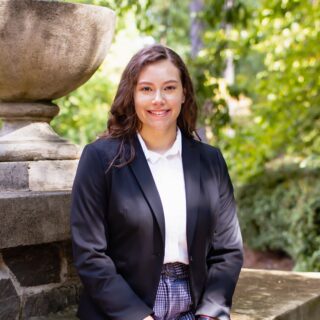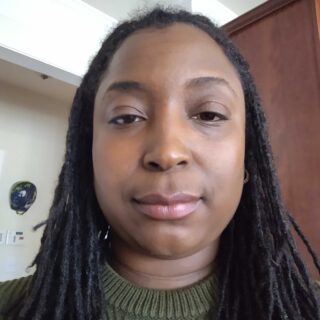In 1954, the U.S. Supreme Court’s landmark Brown v. Board of Education ruling overturned 58 years of precedent for legal segregation in the United States. The long-held “separate but equal” doctrine was now deemed “inherently unequal.” While this newly established precedent was an essential step in civil rights history, the ruling only pointed to the unconstitutionality of segregation in public education. Additional cases supported by the NAACP expanded the ruling to desegregate other public facilities in the United States, often at a faster rate than school desegregation.
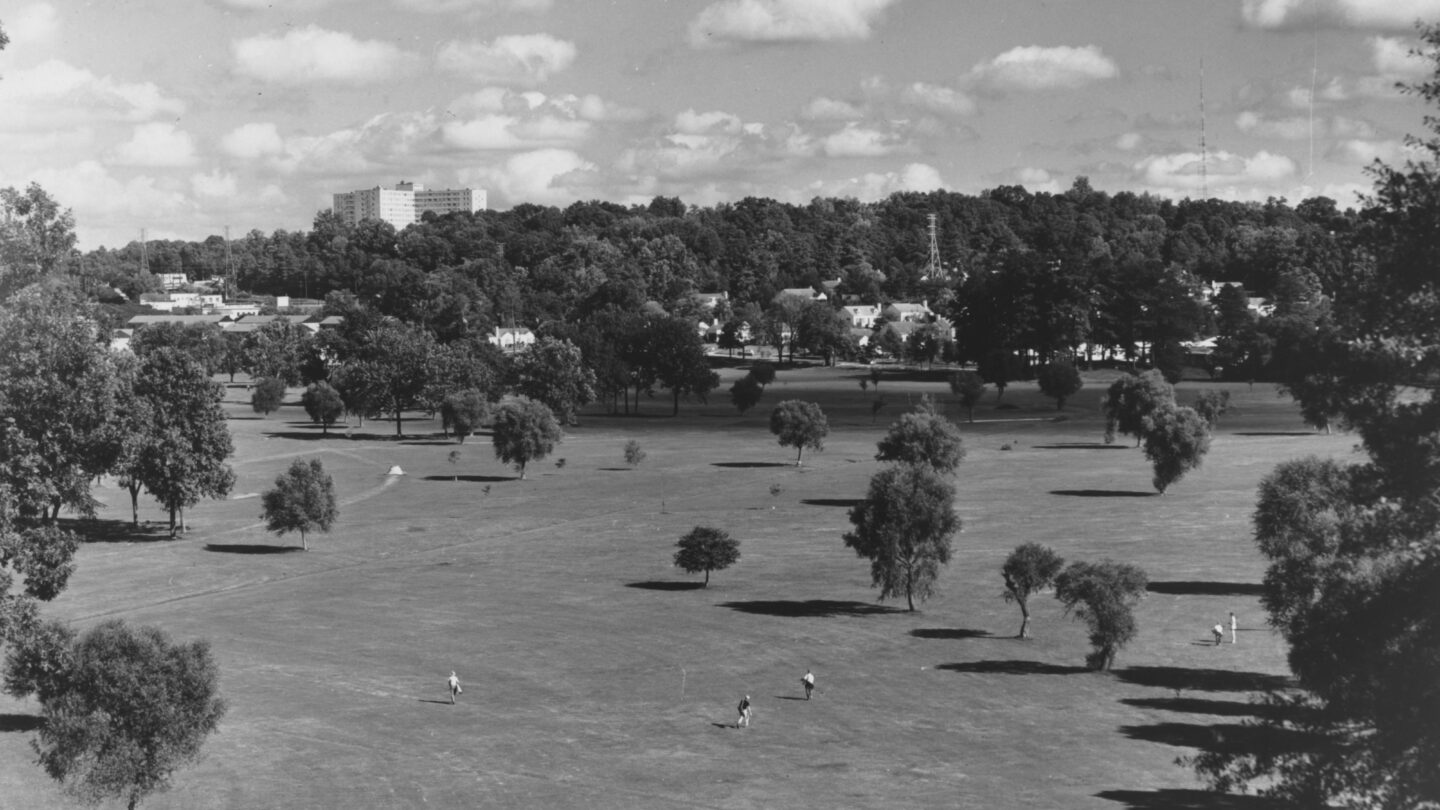
View of Bobby Jones Golf Course in Atlanta. Atlanta Blue Print and Graphics Company Photographs, VIS.112.09.01, Kenan Research Center at Atlanta History Center
One of these cases was Holmes v. City of Atlanta which argued for the end of segregation on Atlanta’s public golf courses after Atlanta’s all-white Bobby Jones Golf Course denied entry to to local black golfers Dr. Hamilton Holmes, his sons Reverend Oliver Holmes and Alfred “Tup” Holmes, and family friend Charles Bell on July 19, 1951. Thurgood Marshall and the NAACP became involved in the case, eventually appealing it to the U.S. Supreme Court.
The Holmes family was well-known in Atlanta and the world of amateur golf. Dr. Hamilton Holmes was a prominent physician. His son, Alfred, affectionately known as “Tup,” was one of the most successful amateur Black golfers in the 1930s. Born in 1917, Alfred Holmes learned to play golf from his father. He also caddied at the Candler Park Golf Course. The Holmes family regularly played at the Lincoln Country Club; the only golf course open to Black people in Atlanta. It was smaller than Atlanta’s publicly funded all-white golf courses. After graduating from Booker T. Washington High School in 1933, Alfred attended Tuskegee University, where he played golf at the collegiate level.
Alfred Holmes won multiple collegiate titles and Southern Amateur and National Amateur championships. Despite his incredible skill, Holmes was never allowed to play professionally due to the Professional Golfers’ Association of America (PGA) whites-only clause.
According to T.B. Jones in Caucasians Only: Solomon Hughes, the PGA, and the 1948 St. Paul Open Golf Tournament, the rule, which was in Sec. 1, Art. III of the PGA constitution and bylaws said, “Professional golfers of the Caucasian race . . . who have served at least five years in the profession . . . shall be eligible for membership.” The law remained in the bylaws until 1961.
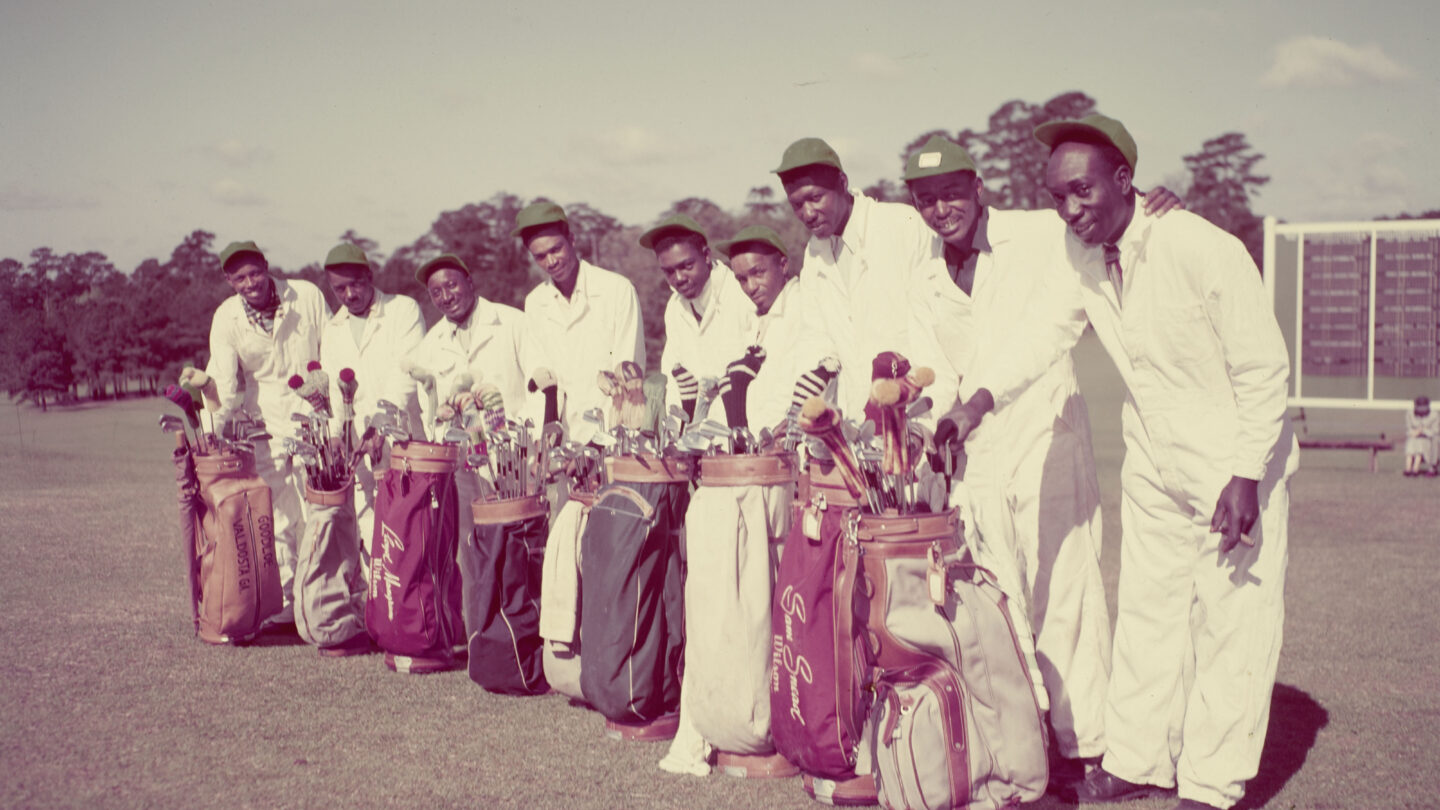
Professional white golfers commonly employed Black caddies, who were just as knowledgeable on the game of golf, and yet barred from playing in the PGA and the golf courses they worked at. The PGA did not remove its whites-only clause until 1961. Pictured are the official Augusta National Club caddies at the 1952 Masters Golf Tournament in Augusta, Georgia. Kenneth Rogers, Kenneth Rogers Photographs, VIS.82.117.05, Kenan Research Center at Atlanta History Center
In 1948, Alfred Holmes returned to Atlanta and established himself as a successful Black businessman. He continued to play golf at the Lincoln Country Club. Still, Alfred, his father, and his brother wanted the opportunity to play at the larger, all-white Atlanta courses. This led Alfred Holmes, Dr. Hamilton Holmes, Rev. Oliver Holmes, and Charles Bell to travel to the Bobby Jones Golf Course on July 19, 1951, in an attempt to play on the links.
When the four men tried to buy tickets to enter, the course manager, Bill Wilson, turned them away based on Atlanta’s law which barred Black people from playing on Atlanta’s publicly funded golf courses.
By July 20, the four announced their plans to bring a federal suit against the city for violating their 14th Amendment rights. They would not receive their first ruling in the case until July 1954. By then, other cases challenging segregated golf courses were already underway. In 1952, the Fifth Circuit Court of Appeals ruled that the city of Houston had to permit Blacks access to the city golf courses but could do so in a segregated manner. While the city of Houston appealed the decision to the Supreme Court, they did not overturn the fifth circuit’s decision. The Houston City Council found it too challenging to coordinate the use of the courses on a segregated basis, so they opened the links to all races. While Houston desegregated its public golf courses, no legal precedent affirmed this decision.
Herbert Holmes, Tupp Holmes great-grandson, discusses his family’s role in desegregating golf in Atlanta. Voices Across the Color Line Oral History Recordings, Kenan Research Center at Atlanta History Center
In May 1954, the Supreme Court unanimously ruled in Brown that the “separate but equal” doctrine was unconstitutional when applied to educational facilities. While the Supreme Court’s ruling was not all-encompassing, it marked the beginning of an important precedent that could be used to overturn segregation in other public facilities.
The presiding judge in the Holmes case, U.S. District Judge Boyd Sloan, ruled on the case in July 1954. He ruled in the same manner as the Fifth Circuit Court of Appeals in the Houston case upholding the ‘separate but equal’ doctrine in the case of public golf courses.
“’Separate But Equal’ Use Of Golf Courses Ordered” Columbus Enquirer, July 9, 1954 via Newspapers.com.
Georgia Attorney General, Eugene Cook, celebrated the decision by giving thanks to Judge Boyd Sloan, who “properly ‘snubbed’ the book psychologists’ theory followed by the U.S. Supreme Court in the school segregation cases.” He and many other segregationists in the South were looking for judicial rulings to continue upholding the separate but equal doctrine in public facilities in light of the Brown ruling.
On July 14, 1954, the NAACP released a statement that they and Dr. Holmes, Alfred Homes, Rev. Oliver Holmes, and Charles Bell would appeal the decision to the Supreme Court based on the recent Brown decision.
Dr. Holmes told the press, “We’re not satisfied with the segregation, and unless we’re allowed use of the courses every day in the week, we will appeal the decision. We want the use of the links for any day. This is the only democratic way.”
On November 7, 1955, the Supreme Court released a per curium ruling in the Holmes case and a case from Baltimore challenging segregation in public parks and swimming pools. In both cases, the Supreme Court ruled that the segregation of public recreational facilities was unconstitutional. The Brown precedent supported this.
The ruling was a massive blow for Georgia segregationists looking for the Supreme Court to uphold the “separate but equal” doctrine in public facilities outside of schools. Eugene Cook believed the Supreme Court was granting the NAACP the decision to further their agenda “to force intermarriage” between Black and white people. While the landmark case Loving v. Virginia, which deemed laws barring interracial marriage unconstitutional, had not yet been ruled on, it was on the court’s docket.
“Segregation Outlawed By Highest Court On Beaches, Playgrounds, Golf Courses” Columbus Enquirer, November 8, 1955 via Newspapers.com
Former Georgia Gov. Eugene Talmadge recommended privatizing the golf facilities to maintain segregation. Talmadge also supported privatizing schools to subvert the Brown ruling. The governor of Georgia at the time, Marvin Griffin, made it clear he would not support integration in public facilities.
“Co-mingling of the races in Georgia state parks and recreation areas will not be permitted or tolerated,” he said to reporters.
“While I cannot speak for city officials, I can make the clear declaration that the state will get out of the park business before allowing a breakdown in segregation in the intimacy of the playground.”
The Supreme Court remanded the Holmes decision back to the Fifth Circuit of Appeals to execute a new order in line with their ruling. Judge Boyd Sloan complied and ordered that the city of Atlanta immediately end all policies prohibiting the use of golf courses based on race. Then mayor of Atlanta, William Hartsfield, accepted the ruling to desegregate the municipal golf courses, but he made it clear that Judge Sloan’s ruling only applied to the golf courses. Mayor Hartsfield announced that other recreational facilities, like swimming pools and playgrounds, would remain segregated.
In response to the ruling, Dr. Holmes, Alfred Holmes, Oliver Holmes, and Charles Bell planned to return to the Bobby Jones Golf Course and finally play their game of golf four years later, but threats against Dr. Holmes led him to cancel the outing. Instead, the four men opted to tee off at Atlanta’s North Fulton Golf Course, officially desegregating the course just in time for Christmas.
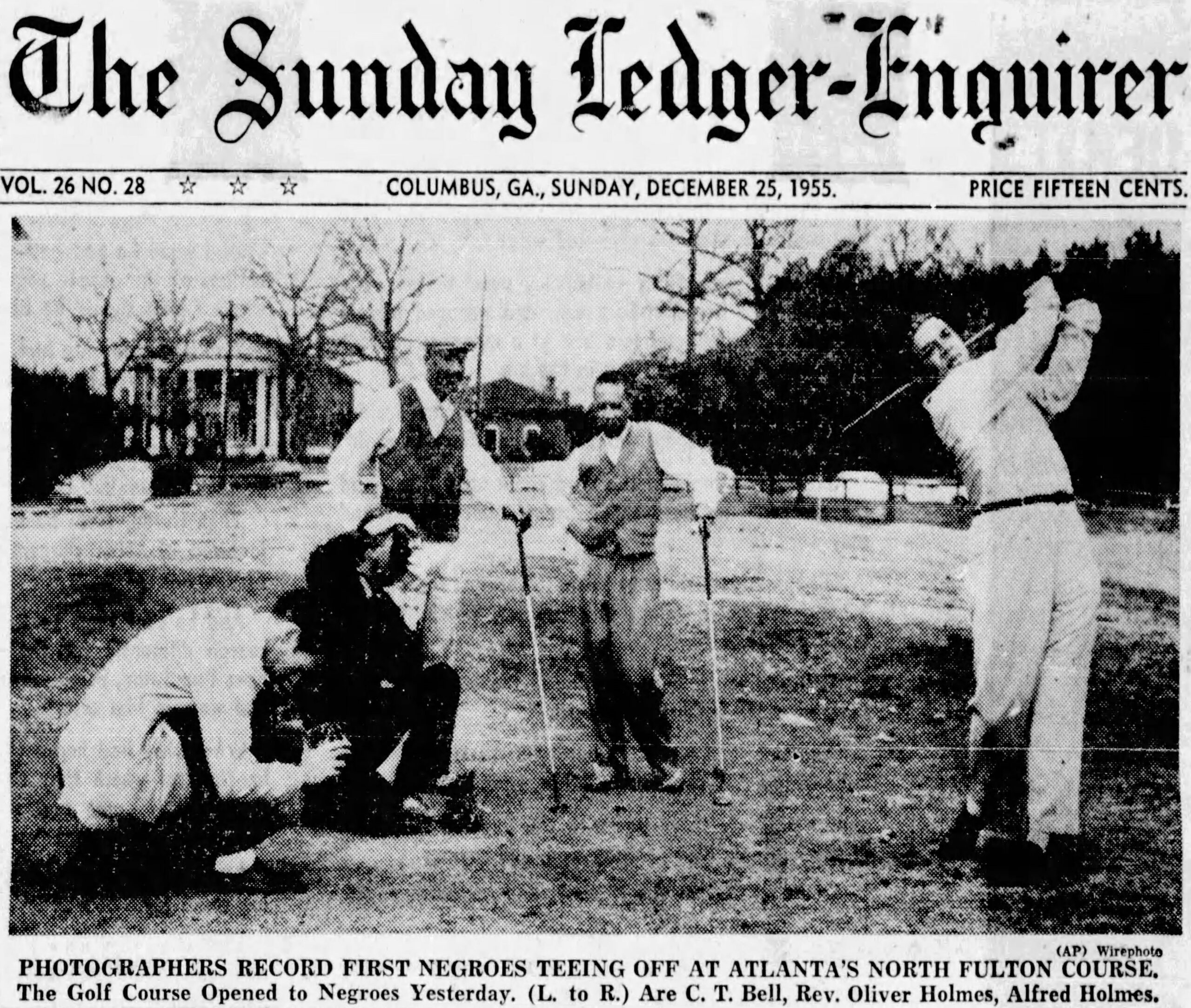
“Photographers Record First Negroes Teeing Off At Atlanta’s North Fulton Course” The Sunday Ledger-Enquirer, December 25, 1955 via Newspapers.com
Brown set the precedent that was the beginning of the end for segregation laws in the United States, but this initially only applied to public education. Through the diligent work of the NAACP and local Black activists, numerous other suits challenging segregation in public facilities continued to expand this ruling. In Southern states, non-educational public facilities were often desegregated first despite Brown predating other segregation cases. In Georgia, the Holmes family and Charles Bell desegregated Atlanta’s golf courses six years before public schools. It was not until 1961, when Alfred Holmes’ son, Hamilton Holmes, and Charlayne Hunter, desegregated the University of Georgia, that Georgia began the process of desegregating schools.
While sometimes overshadowed by its legal predecessor, Brown, the lawsuit brought by Dr. Hamilton Holmes, Rev. Oliver Holmes, Alfred ‘Tup’ Holmes, and Charles Bell is one of Atlanta’s most critical desegregation cases in civil rights history.


